
When it comes to your communities website, it should have one sole function: convert website traffic into leads and leases.
In other words, your website should act as your “ultimate mousetrap” with the rest of your digital ecosystem (ie - Social Media Marketing, Search Marketing, SEO, Email Marketing, etc.) focused on building trust with your audience and driving quality traffic to your website.
So, what is the best way to convert those website visitors into leads and leases?
Let’s start by answering the first question; what influences people to buy things?
A lot of multifamily managers, sales teams, and marketers tend to believe that influencing people to lease an apartment is all about sales tactics, price-points, and concessions. When it comes to your website, it could be where you place your contact form or using 2-D, 3-D, or interactive floorplans.
While those things can be important, what’s even more crucial is the ability to connect with your target audience’s emotions.
As much as you may think your decision to buy products or services are under your control, the reality is there’s a big psychological factor at play. In fact, consumers are more inclined to buy based on their emotions rather than logic and rationale.
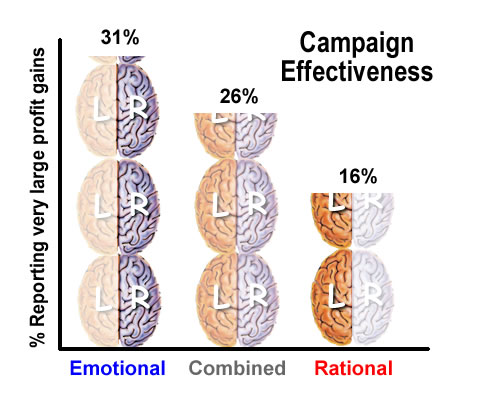
Being aware of the different triggers that activate your prospects’ behaviors can lead to more leads and renters.
So what’s the difference between emotional and rational marketing?
Rational marketing:
Emotional marketing:
Here are a couple of Facebook Ads examples of each type to really visualize the difference.
Looking at this ad from GitScrum, it’s clear they’re trying to appeal to users’ rational side. It mentions hard numbers like "More than 60 Features" and "Save 20% OFF".
The problem with this approach is they've turned the number of "features" their product has into a commodity - the more features you have, the better the product is, which isn't always true.
Another potential issue is - what happens when the "More than 70 Features" company enters the market? Does that mean that they're better?
Talking to hard numbers in your marketing like this can sometimes be compelling, but it can also be detrimental if you're not using them properly.
Now let’s look at a Facebook ad from Shopify;
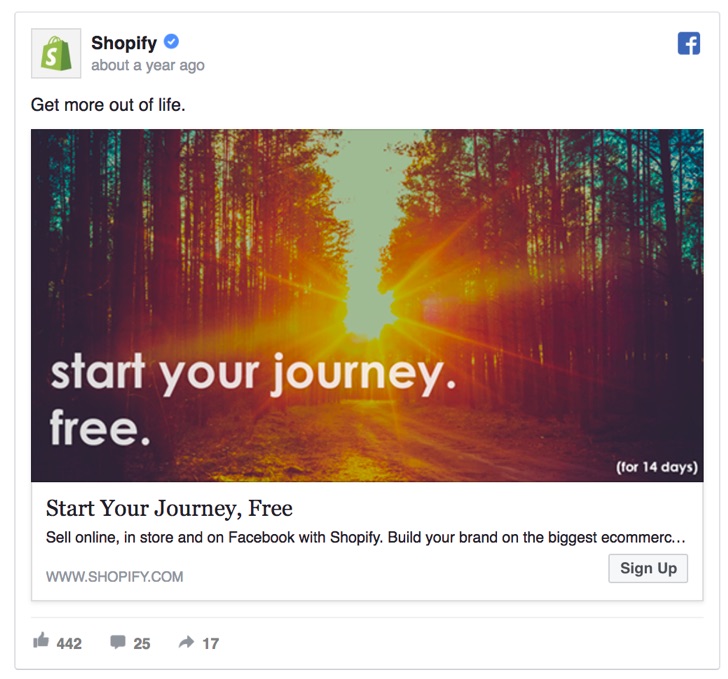
This ad is much more emotional than the first one. It appeals to people who may be looking for a solution to a higher purpose.
In this case, Shopify is selling an opportunity to get more out of life.
Who doesn't want that?!
A value proposition like this one is also very hard for potential customers when they're trying to weight their options and compare Shopify to other solutions, thus forcing them to make an emotional decision.
Why You Need Emotional Marketing
Eighty percent of the decisions we make on a day to day basis are based on emotion. If your marketing is completely reliant on stats and data but has no emotional appeal, there’s a strong chance you’re not connecting with your target audience.
Telling website visitors about the different floor plans and amenities your community has may get them interested. But remember there are dozens of other apartments that offer similar features. The emotional side of your marketing is what will seal the deal.
Take a recent study done by Harvard Business Review gathered data across 30 industries and 400-plus brands over the course of six-years to better understand the science behind emotional marketing and measure their impact on consumer behavior. After digging into the more than one-billion data points that were collected, some of the insight is pretty compelling when it came to consumers who were "fully-connected" to the brand.
"Our analysis showed that although fully connected customers constituted just 22% of customers in the category, they accounted for 37% of revenue and they spent, on average, twice as much annually ($400) as highly satisfied customers." - HBR.org
That's right; fully connected customers are 52% more valuable, on average, than those who are just highly satisfied.
There's no doubting it; emotional marketing can really boost your efforts. The next question is how can you appeal to your audience’s emotions and behavioral triggers to improve your website conversions?
You can follow the tips below to add elements of emotional marketing to your website and improve your lead and lease conversions.
Although clever copywriting definitely plays an important role in emotional marketing, studies have shown we’re more likely to act on visuals. According to Hubspot, 90% of the information transmitted to your brain is visual. Not only that, but 93% of all human communication is visual.
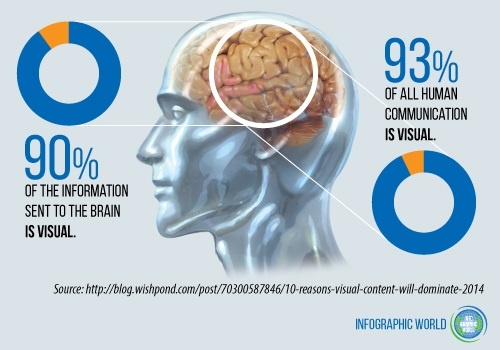
What this means for apartment marketers is you need to look for ways to include visuals in your content to convey emotions.
Instead of just writing out a list of the amenities your building offers, take a page from Cascade at Landmark’s book and show them off.
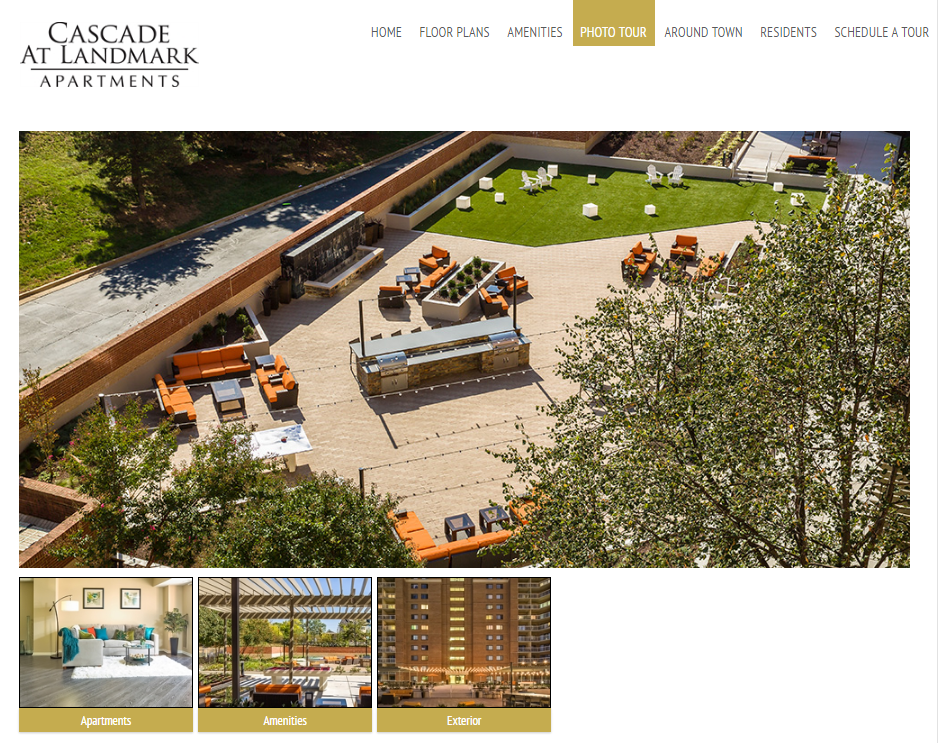
Being able to see the outdoor kitchen and lounge area is a lot more effective than just reading about it.
The rule of visuals also applies to your home page. All too often multifamily websites fill their home page up with sales copy in hopes of enticing traffic to read about everything they have to offer.
But unless your copy is extremely compelling (we’ll touch on how to do that in a bit) there’s a good chance most people aren’t reading all of it.
A study from the Nielson Group discovered that the average user only reads 20% of the text on a web page. So having 1,000 words of content on your home page could actually be losing you renters.
Focus on using colors and images to improve your home page’s interface, rather than adding a bunch of paragraphs. Aside from a couple short paragraphs at the top, Aspen Park Apartments uses visuals to direct traffic to take specific actions.

Remember how we talked about the difference between rational and emotional marketing earlier? It’s going to come in handy when it’s time to write the copy for your website.
Integrating facts and helpful information is important. But you can get a significant leg-up on your competition by appealing to renters’ emotions in your copy because so few apartment marketers do it.
I’m not just talking about using descriptive adjectives to describe how nice your landscaping is. You need to paint a relatable picture that triggers an emotional response from potential renters.
Check out this example from Southwood Properties.
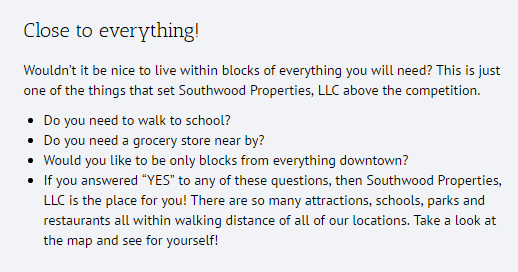
Imagine you’re searching for an apartment and location is important to you. Reading this section would appeal to your need and desire. By putting these features in the form of questions, it engages the reader to continue reading on. Then at the end, there’s a call to action that directs people on what to do next.
Put yourself in the shoes of your target renter. What emotions or thoughts are they going through when hunting for an apartment? Then figure out how you can use behavioral triggers in your content to appeal to those emotions and drive actions.
The customer experience is the culmination of all the interactions a customer has with a company. According to a report from Adobe and Econsultancy, 22% of companies rated customer experience as the most exciting opportunity for their companies in 2016.
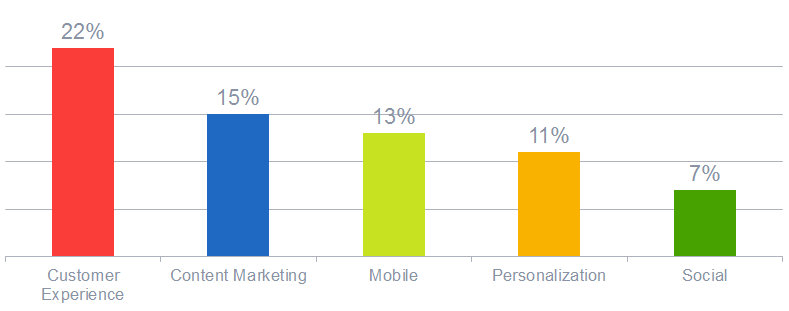
Consumers are looking for something more than just buying a product or service, or in this case, renting an apartment. The customer experience is crucial, and thanks to all the different tools available today it’s easier than ever to deliver.
You can use your CRM to keep a history of your past interactions with leads or current renters, which will allow you to provide a more personal level of service. If you don’t have a CRM tool, check out our list of property management systems.
Customer experience becomes extremely important for multifamily marketing when it’s time for tenants to renew leases, or even when you’re following up with a lead.
When they think back about their past experiences with you, will it trigger positive memories? Or will they think of how rudely you treated them?
Here are some tips to improve your customer experience:
All of these activities will create a good rapport with your tenants, even if they seem small. They’ll associate your brand and community with good memories and a great customer experience. That’ll also drive them to tell their friends and family about your company which can lead to some easy opportunities for referrals.
Sales pro Elmer Wheeler is famous for his saying “Don’t sell the steak, sell the sizzle.” Although he coined the phrase over 70 years ago, it’s still extremely relevant today.
The point Wheeler was making is you need to focus on the experience and benefits of your product more than the product itself.
Most people don’t have an emotional draw to an apartment. But letting them know their unit is secured thanks to your 24-hour security and doorman appeals to our human need to feel safe and secure.
Weaving the “sizzle” into your website through copywriting and visuals will help you establish the emotional connection that a generic apartment description can’t match.
It still amazes us that some multifamily websites completely lack a call to action or a way to direct website traffic in the right direction.
If you want website visitors to take action, you need to be crystal clear on what that action is. Otherwise, they have one of two option:
In most cases, they’ll do the latter. A study from the Score Association found that 70% of small businesses don’t use a call to action to encourage spending. That means they’re leaving it up to their audience to decide when and what action to take.
Every page on your website should push your traffic to complete an action whether it’s filling out a lead generation form, subscribing to your newsletter or just contacting you.
Skyhouse Buckhead uses a sticky top menu that includes their “Lease Now” CTA. No matter where users go on the page, the CTA is always visible.

Go through pages on your site. Does each one have a clear CTA?
Use the tips above to start appealing to your audience’s emotions and generate more leads from your website.
Want more tips to turn website visitors into renters? Here are 7 conversion rate tips you can’t ignore.
These Stories on Strategy

San Diego, CA
600 B St.
San Diego, CA 92101

Austin, TX
600 Congress Ave.
Austin TX 78701

Washington, DC
1875 Connecticut Ave NW
Washington, DC 20009
Copyright © 2024 AM Digital, LLC Terms of Service Privacy Policy
Street Address
City, ST 00000
Call us: 1-800-COMPANY
(800-000-0000)